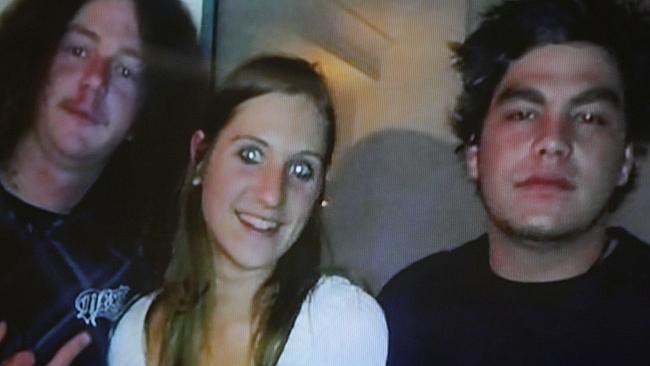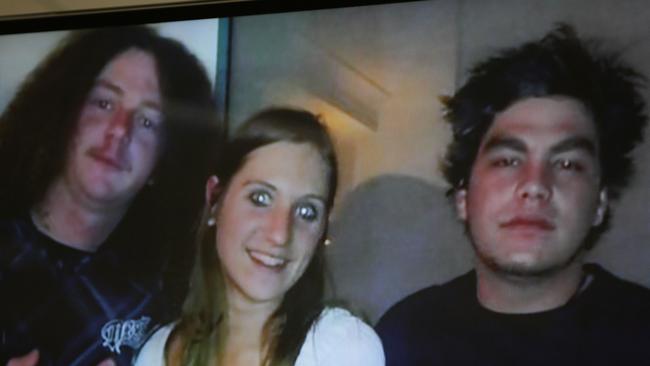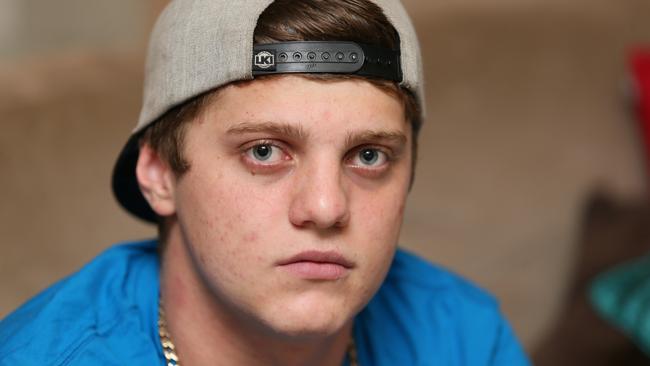Coroner recommends public awareness campaigns after horror smash on Queensland motorway
A FIERY crash that killed four mates on a night out highlights the dangers broken-down motorists face on motorways, a coroner says.

FIVE mates sat in their broken-down Holden on the side of a motorway waiting for roadside assistance when a speeding car crashed into them. Only one of those mates survived.
The tragic tale highlights the risks to the safety of broken-down motorists on major roadways, a Queensland coroner has said as he handed down his findings into a horror smash on the M1 near Coomera, in southeast Queensland, in December 2012.
Natasha Maggs, 23, Tiana Williams, 17, Kody Holland-Williams, 18, and Allan Sullivan, 20, all died when their car exploded into flames when it was hit at high speed by motorist Jordan Hayes-McGuinness, 18, who also died, coroner James McDougall found.
According to Mr McDougall’s report, the four were being driven from their homes in Logan to the Gold Coast by their friend, Thomas Bayer, 16, the sole survivor of the crash.
Natasha and Allan, who were a couple, had a 15-month old daughter who wasn’t with them on that fateful car trip.
Around 11pm, the car started to break down. Thomas, an L-plater who was being supervised by Natasha, drove the car into the shoulder lane and after a failed attempt to repair it, the group called for roadside assistance from RACQ motoring body.

The five friends were waiting inside the Holden when Jordan’s Nissan Pulsar sped into the shoulder lane of the motorway, hit a guard rail and smashed into the Holden.
Jordan died as a result of the crash. Natasha, Kody and Allan were all found to have died of
head injuries. After a few minutes the car burst into flames, killing Tiana. Thomas was able to escape the inferno.
“After the collision, Thomas was unable to open the door,” Mr McDougall said.
“He recalls pushing his friends and telling them to get out. He exited the front passenger door by climbing over Natasha. He said, ‘the fire came all up my legs on my hair and face’.”
Mr McDougall found that Jordan, a P1 driver, had contravened the 11pm curfew of his licence and had a blood-alcohol reading of 0.132 — more than twice the legal limit in Queensland. He also found Jordan was driving about 140km/h in a 110km/h zone.
A friend told the inquest Jordan wasn’t good at “holding his liquor” and would get drunk quickly if he drank too much. The friend also told the court Jordan was a “moderate to heavy user of cannabis”. A post-mortem found Jordan was “heavily affected” by 0.012mg/kg of THC as well as the alcohol in his blood.
Mr McDougall concluded that the condition of the motorway at the location of the crash did not contribute to the accident.
But in handing down his findings, Mr McDougall highlighted concerns about the safety of motorists who have broken down on the side of a major roadway such as the M1, and recommended a public awareness campaign to inform broken-down motorists of what they should do.

Mr McDougall noted that the state’s Department of Transport and Main Roads had implemented the Motorway Breakdown Response Service, which organised the quick removal of cars from motorways.
But, he said, “while this service is of great value to the community, its existence is not well known, nor is the mechanism by which is can be accessed by the public”.
“The Traffic Management Centre contact number — 13 19 40 — and the services which can be accessed through this centre, are not well publicised on the Pacific Motorway (M1) or generally in the wider community,” he said.
“While there are two static signs with the number exhibited on the Pacific Motorway, this is clearly insufficient and needs to be rectified.”
He also said a single emergency community roadside assistance service in Queensland to help stranded motorists in a dangerous position on motorways “would be of great benefit to the community”.
Mr McDougall also recommended an emphasis on defensive driving and the dangers of drink-driving in driver training for learner drivers.
This call has been echoed by the sole survivor of the crash, Thomas Bayer.
He told the Gold Coast Bulletin ahead of the inquest in August that while it “won’t bring back my mates”, he hoped it would mean others would think twice about drink or drug-driving.
“When you’re on drugs or drinking alcohol, you’re not thinking right and you don’t see things straight,” he said.
Thomas said most of his physical wounds, including third-degree burns to his legs, have healed but the emotional toll continued. “There’s not a day I don’t think about what happened,” he said.

